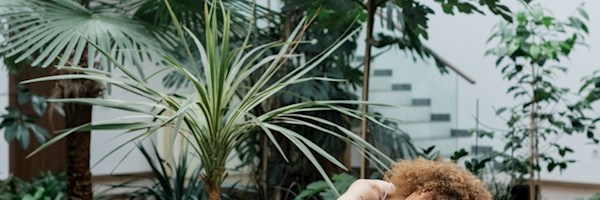Until quite recently, buying commercially grown vegetables and herbs was cheaper than trying to grow them at home. Low prices, together with time pressures on modern families, resulted in the decline of edible gardens, and they were generally thought of as old-fashioned - even ugly. Fruit trees, for example, were considered messy and too much work for the average family to handle.
Most families stopped growing their own produce, and gardens became large expanses of lawn with borders of flowering perennials and shrubs.
As part of the modern slow food movement, many people are now returning to more old-fashioned and sustainable ways of living with a modern twist. It’s generally healthier and cheaper to grow your own vegetables and herbs.
Darlene Roelofsen on Gardening in South Africa says that if you want to grow veggies and herbs but don’t have much space, growing them in containers is a logical choice.
“Gardeners have been doing it for centuries, and with space now often limited, this practice is becoming popular. Keep in mind, though, that growing in pots is not quite the same as growing in the ground, and your plants will need a little more attention.”
Location
Container vegetable gardening allows you to grow fresh vegetables almost anywhere, but selecting the right spots for each type of plant is vital.
Most herbs and vegetables love the full sun, but some, like mint, rocket and summer lettuce, prefer a measure of shade during the heat of the day. Containers have the advantage of being portable. You can place them in various locations like broad window ledges, on steps, balconies, patios, and even tucked in-between shrubs in the garden or alongside walkways or driveways.
All vegetables and herbs grow well with good airflow around their leaves and may struggle in a very hot, enclosed courtyard or balcony. Pots placed in the garden and on balconies will experience strong winds at times, so make sure your pots are weighty enough not to topple over when the wind blows.
Containers
Smaller herbs can be grown in smaller, shallower pots or window boxes. These could include dhanya/coriander, chives, rocket, and salad greens like perpetual lettuce, radish and spring onions.
Much larger containers are required for growing climbing beans, cucumbers, potatoes and tomatoes, although cherry tomatoes grow well in large window boxes and hanging baskets.
Soil
The right growth medium is essential for successful container gardening, so a large part of your budget should be allocated to providing the best possible soil for your plants.
Never use soil dug out of the garden. Instead, choose one of the good garden mixes and potting soils available from nurseries. Be sure to avoid potting soils formulated for indoor pot plants.
You can make a good potting soil mixture for growing vegetables by combining equal quantities of good quality compost and palm peat or coco coir, which are available in brick form. Soak the brick in a container with water until it’s soft and useable. Some gardeners add perlite or vermiculite to retain moisture and to make the mixture less heavy. A slow-release fertiliser added to the potting soil will minimise time spent on feeding.
The speciality mixes formulated for growing herbs are generally a bit more sandy or gritty, with exceptional drainage. Make your own by combining equal quantities of compost, palm peat or coco coir, and washed river sand. Washed river sand is available in small packets and is excellent to have on hand for other plants like succulents.
Good drainage is vital, so ensure that drainage holes aren’t blocked by covering them with weed barrier cloth, a layer of pebbles, broken terracotta pot crocks, or whatever you have on hand, even a good layer of river sand.
Before planting, fill the pots with your soil mixture and firm it down very well, then water thoroughly and watch to see how quickly it drains. If the drainage seems fine, allow the soil to dry out and check if it forms a hard crust on the top. If so, work more palm peat into the top layer to improve the texture.
You can now sow even the smallest seeds directly onto the soil, covering them to the recommended depth with a little extra palm peat.
Care
Newly sown seed will need to be kept moist until germination takes place. To avoid washing your little seeds all over the soil or destroying newly germinated ones, use a spray bottle to water these pots or select the soft misting option on your hose nozzle.
Strongly growing herbs and vegetables in containers need to be checked regularly for water. You will probably need to water daily on very hot days and perhaps only every second or third day during overcast weather. Avoid overwatering, which can wash away essential nutrients in the soil.
If your containers are all grouped near each other, installing a drip irrigation system will make watering easier and will also save on water bills in the long run.
Regular feeding of container-grown vegetables is key to success, so be prepared to invest in recommended fertiliser for vegetables. There is a vast array of suitable feeders, from granular fertilisers to liquid and foliar feeds, so buy whatever suits you and your budget.
Herbs in pots don’t need excessive feeding. However, if you are continually harvesting them, give them an occasional feed with organic fertilisers high in nitrogen. If they are in containers with vegetables, they will be fed along with their companions.
To keep your vegetable garden at its most productive, keep an eye out for weeds and insect pests. Although container-grown plants aren't as susceptible to diseases as those grown in the ground, you will still want to watch out for problems. Remove or treat any plants immediately if they show signs of disease or insect damage.
You can now look forward to harvesting your own home-grown vegetables and herbs, enjoying fresh produce throughout the year.
Writer : Sarah-Jane Meyer
